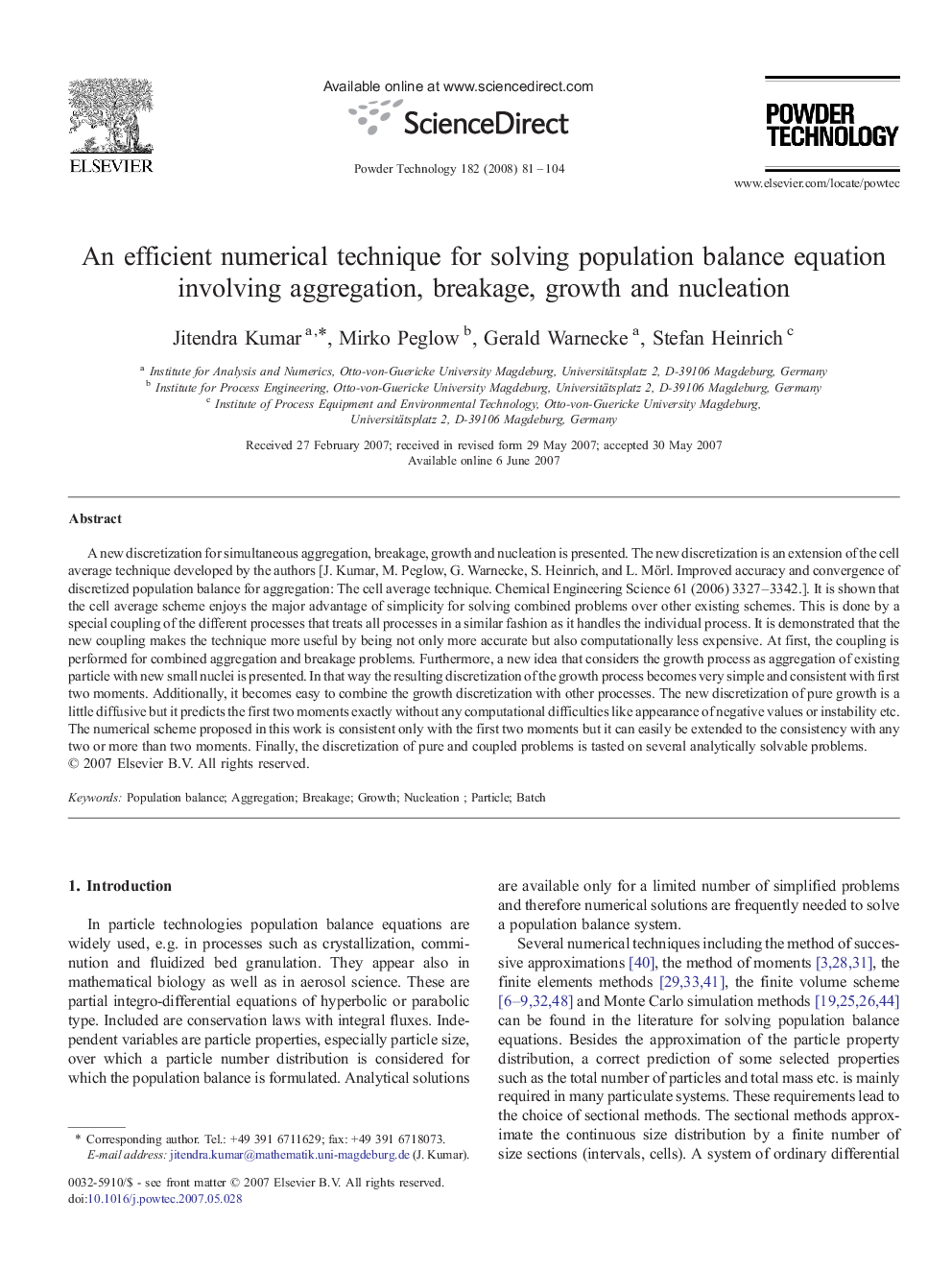| Article ID | Journal | Published Year | Pages | File Type |
|---|---|---|---|---|
| 238658 | Powder Technology | 2008 | 24 Pages |
A new discretization for simultaneous aggregation, breakage, growth and nucleation is presented. The new discretization is an extension of the cell average technique developed by the authors [J. Kumar, M. Peglow, G. Warnecke, S. Heinrich, and L. Mörl. Improved accuracy and convergence of discretized population balance for aggregation: The cell average technique. Chemical Engineering Science 61 (2006) 3327–3342.]. It is shown that the cell average scheme enjoys the major advantage of simplicity for solving combined problems over other existing schemes. This is done by a special coupling of the different processes that treats all processes in a similar fashion as it handles the individual process. It is demonstrated that the new coupling makes the technique more useful by being not only more accurate but also computationally less expensive. At first, the coupling is performed for combined aggregation and breakage problems. Furthermore, a new idea that considers the growth process as aggregation of existing particle with new small nuclei is presented. In that way the resulting discretization of the growth process becomes very simple and consistent with first two moments. Additionally, it becomes easy to combine the growth discretization with other processes. The new discretization of pure growth is a little diffusive but it predicts the first two moments exactly without any computational difficulties like appearance of negative values or instability etc. The numerical scheme proposed in this work is consistent only with the first two moments but it can easily be extended to the consistency with any two or more than two moments. Finally, the discretization of pure and coupled problems is tasted on several analytically solvable problems.
Graphical abstractA numerical scheme for solving a general one-dimensional population balance equation is developed. It is shown that the scheme is simple to use and produces very accurate results of number density as well as its moments.Figure optionsDownload full-size imageDownload as PowerPoint slide
